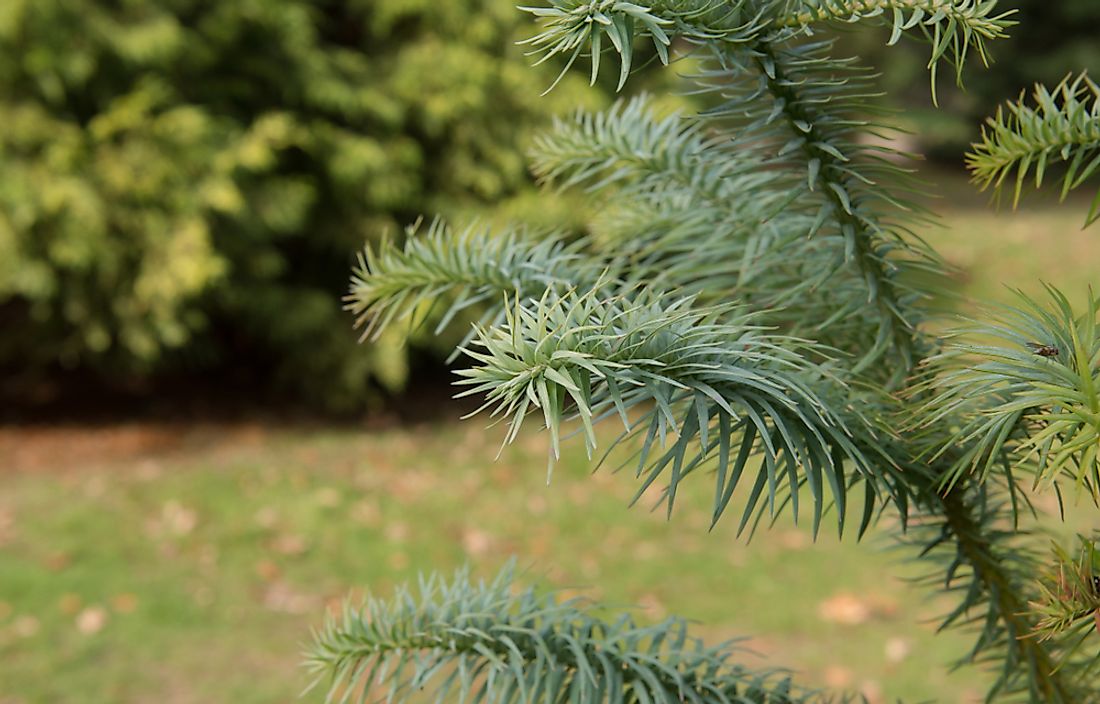Plants Native to China

China has many endemic plants, used in medicine, landscaping, decoration, cooking, and as homes for wildlife. The native flora of China is diverse with more than 30,000 plant species, and some of these species grow only in China. China has many forests where wild species grow. Native species are almost extinct due to low regeneration caused by human activities. The tropical and seasonal rainforests are confined to Hainan and Yunnan Island and contain species like Yunnan cypress. There are also deciduous trees like the happy tree. The native plants are resistant to aphids and many diseases that affect native or exotic plant species. Below are some of the native trees species in China.
Gutta-Percha Tree
Gutt-percha (Eucommia ulmoides) is a small tree native to China. The tree belongs to the monotypic family. Eucimmiaceae. The native plant is almost threatened in the wild, but the people of China widely cultivate it for its bark which has medicinal properties. Gutt-percha grows to a height of about 15m. It has deciduous leaves arranged alternatively with serrated margins and acuminate tips. Its flowers (March-May) are inconspicuous, small and green, and its fruits (June-November) are a winged samara, 2-3 cm by 1-2 cm with one seed. The leaf produces a latex compound when torn, which then dries to rubber to hold the leaf together. This native plant is important in the natural rubber producing industries in China.
Happy Tree
The Happy tree (Camptotheca acuminate) is a low-growing plant (20m) tall, native to China and Tibet. The deciduous tree has oval leaves with dark pleated veins and a light gray bark. When it blossoms, the flowers are whitish to yellowish with spherical clusters. In the past, the herb’s extracts used for treatment of diseases like the common cold, liver problems, psoriasis, and digestive problems.The happy tree is native to warm, humid river banks along the Yangtse River in China. The tender leaves, bark, roots, and seeds have the medicinal properties.
Dove Tree
The dove tree (Davidia involucrate) is a medium-sized deciduous tree native to south-central and southwest China. The cordate leaves grow in alternate morphology and are symmetrical, ovate to heart-shaped with a size of 10-20 cm long and 7-15 cm wide. It blossoms in May with tightly clustered flowers about 1-2 cm across, reddish in color. The base of the plant has low hanging white bracts that perform the function of petals. The name dove tree comes from these petals that flutter in the wind like white doves. The tree produces very hard nuts (with 3-6 seeds) about 3 cm long. The nut has a green husk (4 by 3 cm) hanging on a 10cm stack.
Dawn Redwood
The dawn redwood (Metasequoia glyptostroboides) is a fast-growing tree native to Luchuan country of Hubei province in China. The tree is an endangered coniferous tree, and it is the only surviving species of the genus Metasequoia. It is the shortest tree in the redwood family with a height of about 61 m in height. The leaves grow in opposite arrangement, with a bright fresh green that turns foxy reddish-brown in the fall. It bears pollen producing cones on long spikes in early spring. The cones are ovoid with scales arranged in opposite pairs and mature 8-9 months after pollination.
Yunnan Cypress
Yunnan cypress (Cupressus duclouxiana) is a coniferous tree species native to China in the deep gorges of Jinsha, Langcang, and Nu Rivers. The tree has established itself successful in the Western Hills of southern Kumming and the dry hills of Central Yunnan. The tree grows in an altitudinal range of 1900m and 3300m above sea level. The population of this species is decreasing primarily because of poor regeneration and over-exploitation. The tree grows to a height of 25 m. It is crown conical when young and broadly domed when old.The leaves are closely apprised and slightly glaucous abaxially, (1-2 mm) on ultimate branchlets that are ridged and often inconspicuous. The pollen is microsporophylls and produces cones which are dark brown and globose about 15-32 mm in diameter. The cone scales are fertile with numerous brown or purple-brown seeds.
China Fir
China fir (Cunninghamia lanceolata) is a needled evergreen tree native to forested areas of central China and Tibet. It grows to a height of 150 m with a characteristic pyramid form, spreading with a horizontal branching system. The tree grows in multi-trunked forms. The tree has sharply pointed, finely toothed leaves that appear as blue-green needles spirally arranged but usually twisted at the base. In cold winter the foliage bronzes. Its fruits are oval to globose cones which appear in small groups at the shoot heads. In warm winters the tree develops into a beautiful garden tree. The tree is resistant to most insects and diseases.
The biggest problems facing these native plants of China is over exploitation. The trees are not only suitable for medicinal purposes, but some people cut them for timber and firewood. Regeneration of the tree is problematic thanks to the overgrazing of livestock. Fire is also another potential hazard to old tree species growing in the villages and along the roads. Some communities like Buddhists protect some native trees as they are holy. In general, there are no adequate reserves and legislation measures to protective native plants from logging.
Native Plants Of The People's Republic Of China
| Native Chinese Flora | Scientific Name |
|---|---|
| Happy Tree | Camptotheca acuminata |
| Gutta-Percha Tree | Eucommia ulmoides |
| Dove-tree | Davidia involucrata |
| Dawn Redwood | Metasequoia glyptostroboides |
| Yunnan Cypress | Cupressus duclouxiana |
| China Fir | Cunninghamia lanceolata |
| Golden Larch | Pseudolarix amabilis |
| Fujian Cypress | Fokienia hodginsii |
| Tienchi Ginseng | Panax notoginseng |
| Chinese Wolfberry | Lycium chinense |











